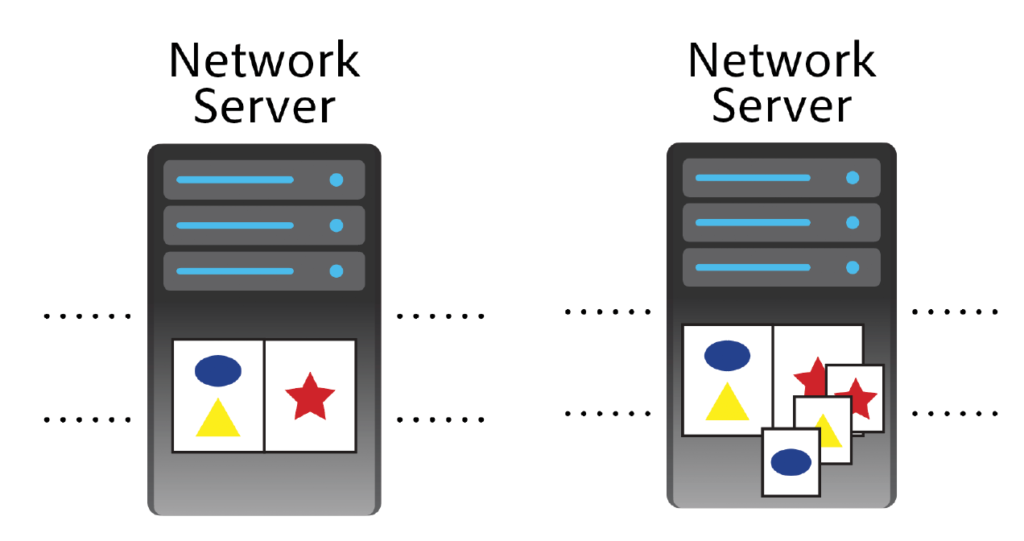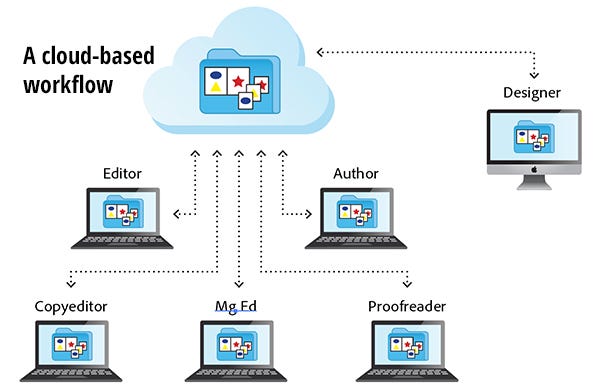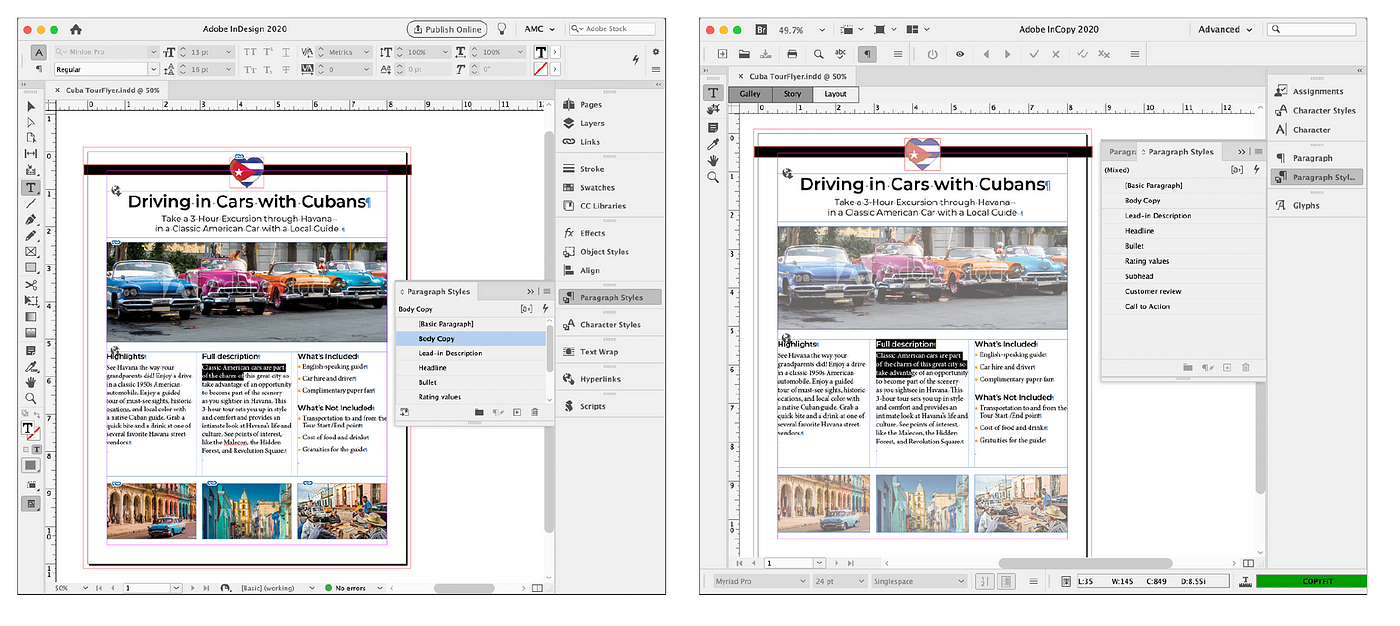

So in InCopy, we go to File, choose Open, navigate to the server, open up the InDesign file, and there it is, there's the file with the same globe and piece of paper icon. That's why you want them to open the INDD file in InCopy, not the Stories, that's why we hid them in this folder. ICML is the native file format for InCopy, but your InCopy users would not see the layout, they would just see the text, which is disconcerting. When we exported all these stories to InCopy format, InDesign exported ICML files for every one of the stories in the InDesign file. You see these little icons next to the stories? That means that they are shared. It's reminding you that you have to save the document, yes, that's fine. Choose All Stories, navigate again to your server, make sure that you're there. Bypass anything that says Assignment in it, you don't really need that. Very fast, go to Edit, InCopy, yes, I bet you didn't even know you had an InCopy menu, and we're just going to go right down to Export, All Stories. The second thing that you need to do is make these stories editable to the InCopy user. Going to go to File, do Save As, navigate to the server, I'll make a new folder, call it Pixelford Project, this'll be our production folder, and then save the InDesign file to that.

What you need to do, designers in InDesign, is you work off the server or that shared Dropbox or Google Drive folder.

Here I'm going to use a fake server since I don't have access to one, just a folder on my desktop, and I put a shortcut to it out here in my favorites. If you don't have a file server, you can use Dropbox, you can use Google Drive. Typically, that's in a shared file server on the network. The other thing you need to know is that the InDesign file needs to be in a place that is accessible to every writer and the designers who need to work on it. Give yourself two different user names if you are testing this on the same computer. And over here in InCopy, which I've already installed, I go to User, and here I am Joe the Editor. Go to File, down to User, this is just used to identify yourself in the workflow. And in InDesign, you want to give yourself a unique user name.
#CHECK IN VS CHECK OUT INCOPY TUTORIAL FULL#
For them, it's only $4.95 per month per user, much cheaper than what the full Creative Cloud costs, that's nice.
#CHECK IN VS CHECK OUT INCOPY TUTORIAL INSTALL#
But if you want to test it on the same computer, like what I'm doing, then go ahead and install InCopy. InDesign comes with InCopy, but your editors will need to subscribe to InCopy single app from Creative Cloud in order to use it. A little bit of setup information, and then I'll jump right in. InCopy is the program from Adobe that allows editors and writers who don't have InDesign to open up your layout and to edit the text in there, making for a very fast, streamlined collaborative publishing, and shaving days and weeks out of turn-around time for getting your projects out the door. Let's do a quick five minute overview of how InDesign and InCopy work.


 0 kommentar(er)
0 kommentar(er)
